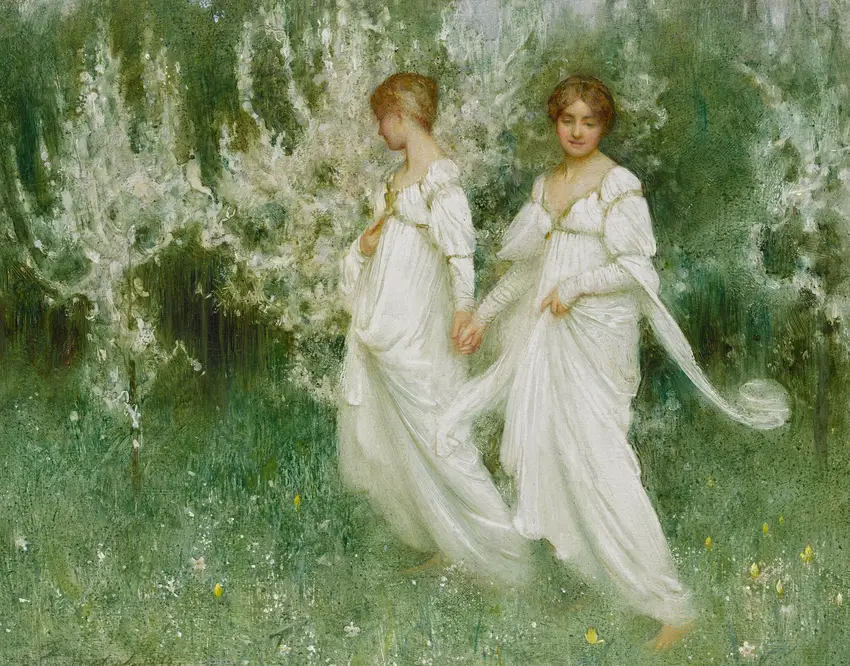Arthur Hacker
Arthur Hacker (1858–1919), English, A painter of elegance and emotional depth, this British artist bridged the Victorian and Edwardian eras with a style that blended academic precision with subtle symbolism. Trained at the Royal Academy and later in Paris under Léon Bonnat, his work often explored themes of myth, literature, and quiet introspection. While he gained acclaim for historical and religious scenes early on, later pieces leaned toward intimate portraits and genre paintings, capturing fleeting moments with a soft, almost poetic realism.
His masterpiece *The Temptation of Sir Percival* (1894) exemplifies his knack for narrative drama, merging Pre-Raphaelite detail with a more subdued palette. Yet it’s in his quieter works—like *The Annunciation* or portraits of women lost in thought—where his sensitivity to light and mood shines. Though less radical than his contemporaries, his technical mastery and thoughtful compositions earned him respect, even as tastes shifted toward modernism.
Influenced by French naturalism yet rooted in British tradition, his legacy is a nuanced one: a painter who balanced grandeur with restraint, leaving behind canvases that whisper rather than shout.
His masterpiece *The Temptation of Sir Percival* (1894) exemplifies his knack for narrative drama, merging Pre-Raphaelite detail with a more subdued palette. Yet it’s in his quieter works—like *The Annunciation* or portraits of women lost in thought—where his sensitivity to light and mood shines. Though less radical than his contemporaries, his technical mastery and thoughtful compositions earned him respect, even as tastes shifted toward modernism.
Influenced by French naturalism yet rooted in British tradition, his legacy is a nuanced one: a painter who balanced grandeur with restraint, leaving behind canvases that whisper rather than shout.
-

Innocence
Arthur Hacker (English, 1858–1919)A tender portrayal of purity, where light and shadow dance around a figure lost in quiet reflection.
